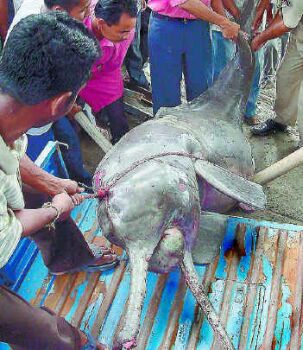
Of late, India’s most sacred river, the Ganga is reporting dolphin deaths. Water pollution and fishing are taking a toll on the endangered species like dolphins. Water is their home, yet water is taking their lives.
The latest death report of a whale comes from Bhagalpur in Bihar. The wildlife department reports that the whale was found dead near a bridge across the Ganges in Bhagalpur.
As stated by an official:
The dolphin is suspected to have been killed after it got trapped in a fishing net,
This is the fifth time in last one year when a dolphin was found dead in Bihar. The ever-rising number of dolphin deaths in the region is a cause of concern for conservationists and wildlife enthusiasts who feel that it is only the tip of the iceberg, with several deaths remaining unreported, the number is much more than records show.
Untreated sewage, rotting carcasses and industrial effluents that find their way into the Ganges have also affected the dolphins. This pollution level in the river has spiraled making the river to silt and shift its course, and thus, becomes the reason behind such a rising number of dolphin deaths. And also the fish are killed for meat, skin and oil. While a few dolphins die after getting entangled in fishing nets.
Vikramshila Gangetic Dolphin Sanctuary, set up near a decade ago is the mortuary for the dead dolphins.
The dolphins of the Ganges have the distinction of being one of the four freshwater dolphin species in the world, the other three are found in the Yangtze in China, the Indus in Pakistan and the Amazon in South America.
In the 1980s, the Gangetic delta zone alone had around 3,500 dolphins. But, the numbers have dropped drastically over the past decades. Today, the dolphin population across India is estimated to be a little over 1,500. And half of these are found in the Ganges in Bihar.
A total clean up of the Ganges is required to save the animal. Though the Ganga Action plan on the cleaning of the most sacred rivers of the Hindus is going on, but only on paper.
Sunil Choudhary, a wildlife expert, said:
On paper conservation work is going on. But in reality the sanctuary has no formal conservation plan. Unless locals are involved in conservation and awareness is created, dolphins will continue to die.
Government must arise from its slumber to save what locals call as ‘sons of the river’, if we want our future generations to have a glimpse of one of the most beautiful mammals on earth.
Image
Via: Sify

